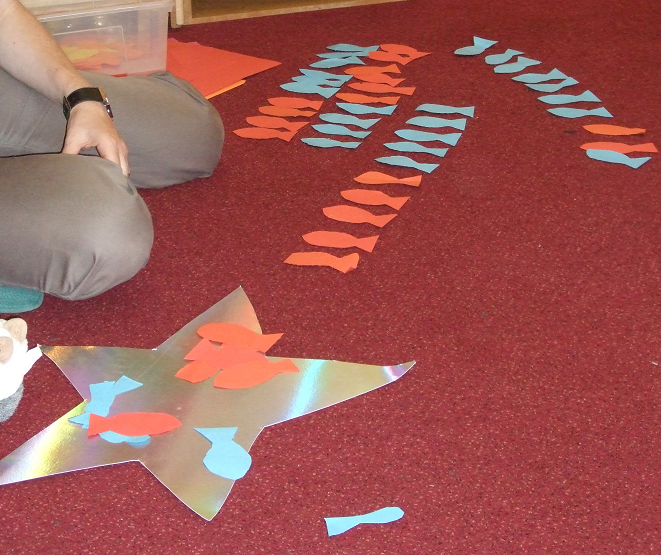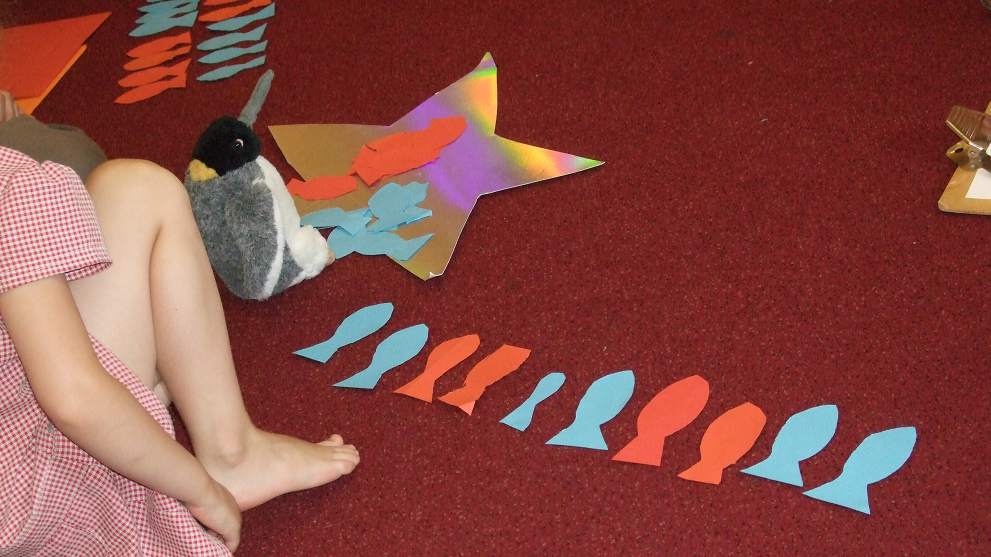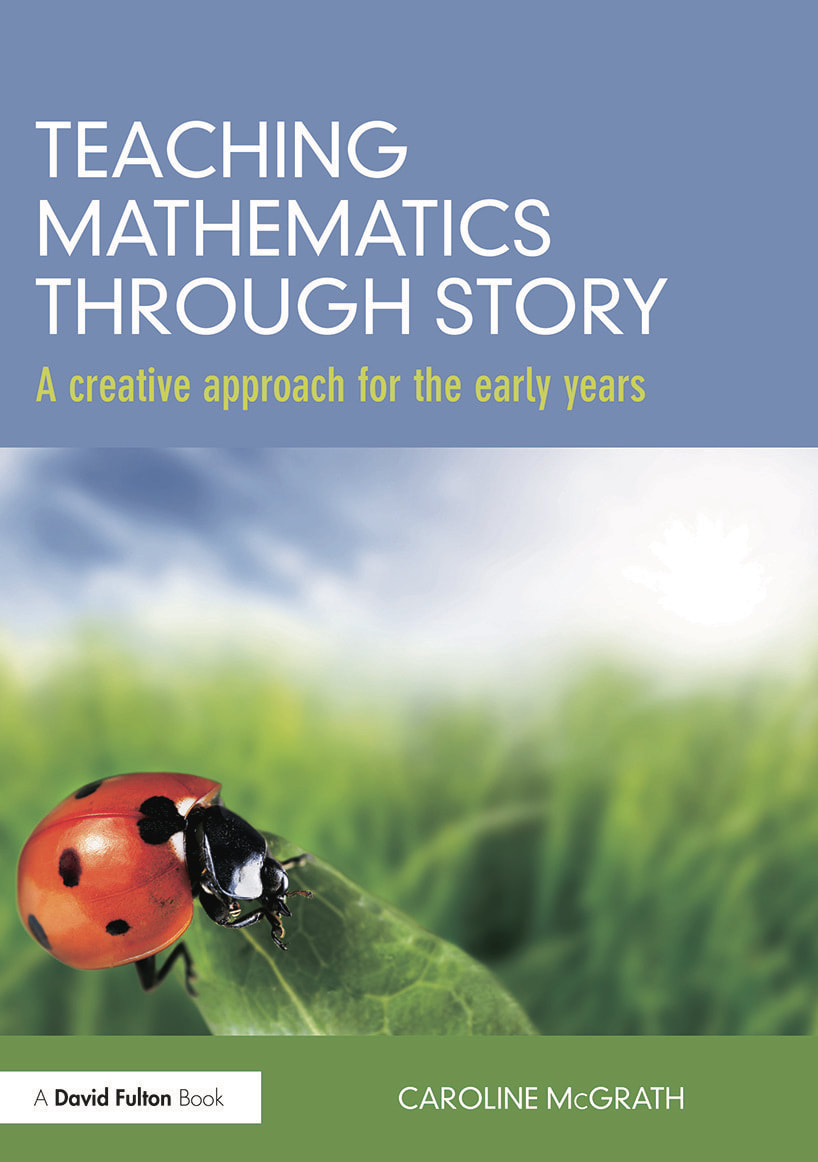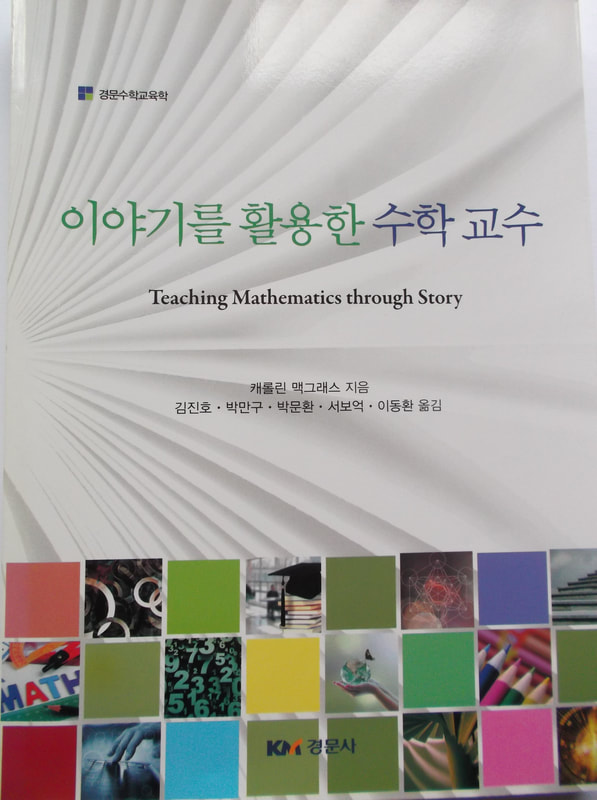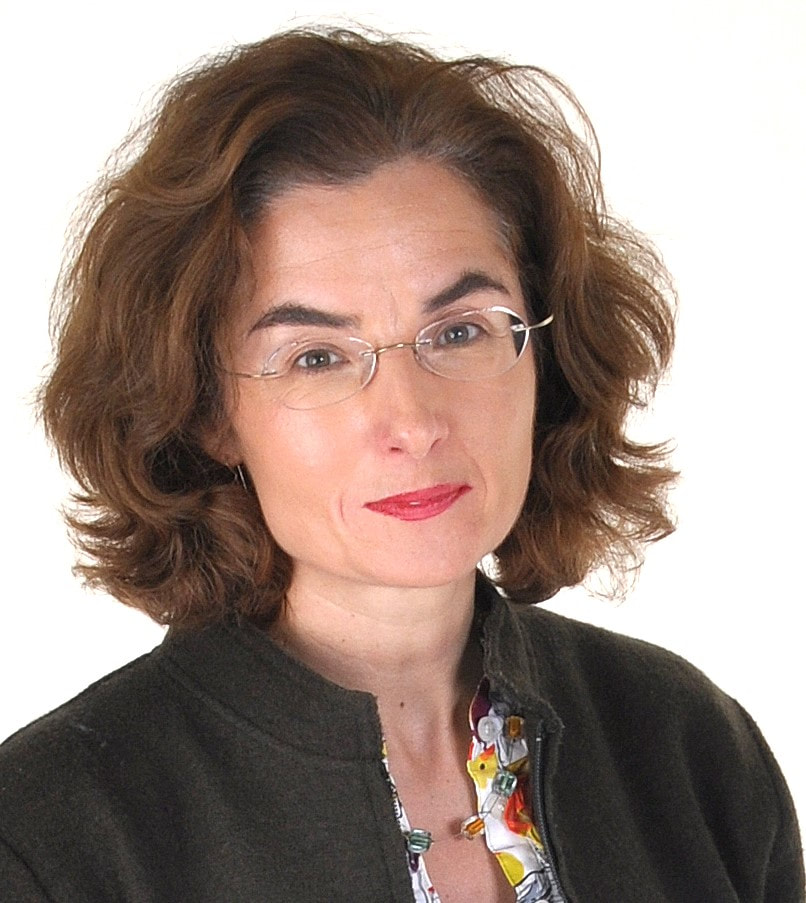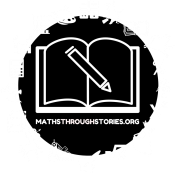This blog post is about oral mathematical storytelling and is written by Caroline McGrath, a specialist mathematics teacher in the UK. The blog post is based in part on her doctoral research; on her book, ‘Teaching Mathematics through Story: A creative approach for the early years’, and her chapter, ‘Mathematical Storyteller Kings and Queens: An alternative pedagogical choice to facilitate mathematical thinking and understand children’s mathematical capabilities’, published by Routledge.
The medium of oral story allows children flexibility to think playfully about mathematical ideas. In this blog post, I discuss a range of pedagogical benefits of thinking mathematically through storytelling. This piece has three aims: to characterise some of the qualities of oral mathematical storytelling; to consider the satisfaction and surprise the approach can bring; and, to promote this creative pedagogical tool.
Story and oral story
Story as an oral tradition is a powerful medium for thinking and one which is often neglected as part of young children’s learning experiences (Allison, 1987; Booker, 2004; Bryant, 1947; Egan, 1988; Walker, 1975). Children respond favourably to mathematical ideas contextualised in a meaningful way in story contexts (Schiro, 2004; Van den Heuvel-Panhuizen & Van den Boogaard, 2008). Where story and mathematics connect, there is scope to think mathematically through the story context.
Oral story is the art of expressing verbally, real life or fantasy, without a written text. The concept of storying is described by Wells (1987, p.194) as “constructing stories in the mind”, which he positions as one of ‘the most fundamental ways of making meaning’. Oral mathematical story is telling a story with the intention of constructing mathematical meaning. Reading a book is interpreting a text in a shared way, whereas telling a story is a personal performance (McGrath, 2015). With oral storytelling, the storyteller is free from text; needs to be spontaneous; has a closer connection with their audience; and has a personal consciousness (Schiro, 2004).
To develop skill at oral mathematical storytelling, a three-step model is helpful. The proposed model draws on Corbett’s Talk for Writing (2008) where educators commit to the creative opportunity oral storytelling brings as they develop a personal pedagogic tool (Corbett, 2006; 2007; Palmer & Corbett, 2003). The three steps: imitation, innovation and invention which equip children with prerequisite story-writing skills, can be remodelled for oral mathematical storytelling. Oral story authors can start by retelling a published story without the picture book (imitation); then change something about the original story (innovation); and, create original oral mathematical stories (invention). The storyteller orchestrates words, gestures and simple story related materials as mediational tools (Carlsen, 2013).
What if?
This question prompts wondering, promotes possibility thinking, and, taps into the remarkable capacity of children to think playfully. What happens to the mathematical idea if we change the story? Or what happens to the story if we change the mathematical idea? For example, in ‘Goldilocks and The Three Bears’, what if there were four bears instead of three? What if there are two similarly aged small bears (twins)? What if Goldilocks is out with a friend from her village, how will they share the porridge? In mathematical oral storytelling, the ‘What if?’ question is key to thinking playfully about mathematics.
Constructing a story with children
‘Penguin’, is a story constructed between a teacher and a small group of Reception class children using cut-out coloured fish (see Figure 1). First, a summary of the story:
Once upon a time there was a little penguin. His mum said to him ‘Go to the magical pond and catch ten fish for our tea.’ He walked a bit, and he walked a bit, and he walked a bit, and he walked a bit, until he got to the magical pond that glistens and shines. ‘Today we have orange and lemon flavoured fish’, the pond says. Penguin fished, and fished and fished until he caught ten delicious fish for tea. But on bringing the catch home, the family eats the fish and is still hungry and so Penguin has to return to the pond with the lemon and orange flavours and find different ways to catch ten fish …
Figure 1: A Reception class teacher keeps number compositions for ten in view so that children think of other possibilities.
Different storytelling’s of ‘Penguin’ uncover ideas about: eleven possible number compositions for the number 10; conservation of number with different arrangements of fish on the carpet; a different sized fish feeding the family for longer; the division of a large fish; and tessellation as cut-up pieces are reunited. The commutative property of addition is made visible by using different coloured fish, for example, 10 is represented as 4 strawberry and 6 blueberry, and 6 strawberry and 4 blueberry flavours.
An outcome of the action of not placing all the same coloured fish together, is thinking about pattern. For example, Adam arranges 7 lemon and 3 orange fish carefully setting out (in this order) 5 lemon, 2 orange, 2 lemon and 1 orange fish. Equivalence between his 7 lemon flavours, composed of five and two; his 3 orange flavours composed of two and one, and a previous arrangement of 7 lemon and 3 orange fish, is realised.
Mathematical storytelling is characterised by conversations rich with higher order questioning which consequently allow children’s negotiation and generation of mathematical understanding. A teacher describes this pedagogical approach as: “a living interactive relational experience which is creative, exciting and unknown” (McGrath, 2019, p. 305). Naik (2013) refers to a “space between the known and the unknown where true creativity can thrive”; participants in the oral story project take a creative risk with their mathematical storytelling.
Story as a medium provides meaningful, memorable, metaphorical contexts which help children think about and articulate mathematical ideas. After hearing ‘Penguin’, a child, for example, retells the story using the coloured fish with remarkable precision. She creatively adapts the story to fit with different characters, extends the story to try the number composition for 11 rather than 10, offering an imaginative twist at the end (see Figure 2). The transcript of this child telling 'Penguin' can be accessed here, and the accompanying audio file can be accessed under the Support Material section here.
Figure 2: A child retells ‘Penguin’ arranging the cut out coloured fish in a way which requires further thinking.
Satisfaction and surprise
The imitative storytelling activity of children provides surprising insight about their mathematical capabilities. A child considered of lower ability explains a story contextualised idea of counting in multiples and in doing so challenges assumptions about her ability: “When you counted in twos you missed one out, so it’s like a pattern” (McGrath, 2014, p.67). During the oral story project, quiet children surprise their teachers with their mathematical storytelling confidence. (Children as kings and queens of oral mathematical storytelling is documented in McGrath (2015)).
Oral mathematical story challenges educator perception of themselves and enhances their professionalism: “I have grown in confidence, from a teacher who stuck to traditional tales, to being able to create my own stories based on mathematical concepts, confidently telling them with just a simple story map as a prompt” (McGrath, 2014, p. 140). The impact of children sharing storytelling with their parents at home is noted by a teacher in McGrath (2019, p. 293): “[…] to be able to go home and be a storyteller…I just think that when children take their learning home…it gives you such a positive feeling as a teacher”.
The possibilities
Oral mathematical story represents a hybrid of pedagogical approaches in that it is a traditional idea combined with modern practice. This alternative pedagogical approach opens up a new discourse which legitimatises a different way of teaching mathematics. As an integrative approach to implementing literacy and mathematics curricula, it is characterised by professional surprise and satisfaction. However, opportunity for oral mathematical story rely on a culture of creative choice.
References
Allison, C. (1987). I’ll tell you a story, I’ll sing you a song: A parents’ guide to the fairy tales, fables, songs, and rhymes of childhood. Dell Publishing.
Booker, C. (2004). The seven basic plots: Why we tell stories. Continuum.
Bryant, S. C. (1947). How to tell stories to children and some stories to tell. George G. Harrap and co. Ltd.
Carlsen, M. (2013). Engaging with mathematics in the kindergarten. Orchestrating a fairy tale through questioning and use of tools. European Early Childhood Education Research Journal, 21(4), 502-513.
Corbett, P. (2006). The bumper book of storytelling into writing Key Stage 1. Clown Publishing.
Corbett, P. (2007). Developing creative writing skills Available at: http://www.learning-works.org.uk/index.php?id=566 (Accessed: 30 October 2020).
Egan, K. (1988). Teaching as storytelling: An alternative approach to teaching and the curriculum. Routledge.
McGrath, C. (2014). Teaching mathematics through Story: A creative approach for the early years. Routledge.
McGrath, C. (2015). Mathematical storyteller kings and queens: An alternative pedagogical choice to facilitate mathematical thinking and understand children’s mathematical capabilities. In S. Chinn (Ed.) The international handbook for mathematical difficulties and Dyscalculia (pp. 369-382). Routledge.
McGrath, C. (2019). Oral story: A pedagogical tool encouraging children’s mathematical thinking. PhD thesis. University of Plymouth [Online]. Available at: https://pearl.plymouth.ac.uk/bitstream/handle/10026.1/13717/2018McGrath10163476phd_full.pdf?sequence=1&isAllowed=y (Accessed: 30 October 2020).
Naik, M. (2013). ‘Mathematics. In R. Jones and D. Wyse (Eds.), Creativity in the Primary Curriculum (2nd ed., pp. 33-49). Routledge.
Palmer, S. & Corbett, P. (2003). Literacy: what works? The golden rules of primary literacy and how you can use them in your classroom. Nelson Thornes.
Schiro, M. (2004). Oral storytelling and teaching mathematics: Pedagogical and multicultural perspectives. SAGE.
Talk for Writing (2008). Presented by P. Corbett [DVD]. DCSF Publications.
van den Heuvel-Panhuizen M. & van den Boogaard, S. (2008). Picture books as an impetus for kindergartners’ mathematical thinking. Mathematical Thinking and Learning, 10(4), 341-373.
Walker, B. (1975). We made a story. Garnet Miller Ltd.
Wells, G. (1987). The meaning makers: Children learning language and using language to learn. Hodder and Stoughton.
| ‘Teaching Mathematics Through Story: A creative approach for the early years’ draws on practical work with children, educators, parents, and professional storytellers. This book considers relationships between story and mathematics in picture books and provides guidance on how to construct oral mathematical storytelling experiences. (The book has now been translated into Korean). Audio files of mathematical storytelling by children and educators can be found under the support material link here. Audio recordings include: Dinosaur Blue Eggs; Good Night Gorilla; Little Lumpty; One City Two Brothers; Penguin (Child); Penguin (educator); The Elves and the Shoe Maker; The Enormous Turnip; The Greedy Triangle; and, Two of Everything. They are free to download. The craft of oral mathematical storytelling is made accessible through this text. |
About the author
|
Caroline McGrath is a specialist mathematics teacher. She began her studies at Dublin City University (Ireland) for an Analytical Science degree. After qualifying with a Post Graduate Certificate in Education from Oxford Brookes University (UK) she worked as an Early Years Teacher and lectured in Early Childhood Studies. She achieved the Postgraduate Diploma in Professional Studies in Education (SpLD/dyslexia) from Kingston University, was awarded the Hornsby Certificate of Professional Practice, and holds Associate Membership of the British Dyslexia Association (AMBDA). She has a Masters and Doctorate from Plymouth University (UK). She writes from first-hand experience teaching and researching children’s mathematical development.
|
